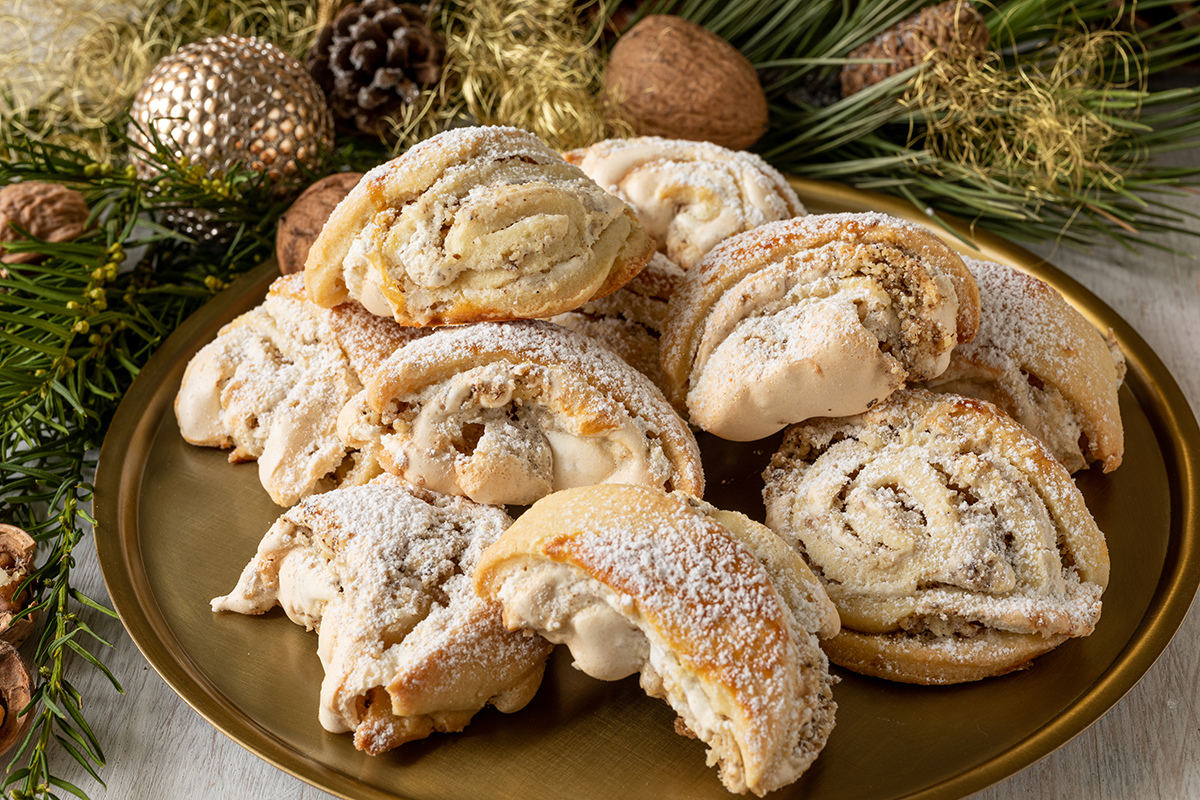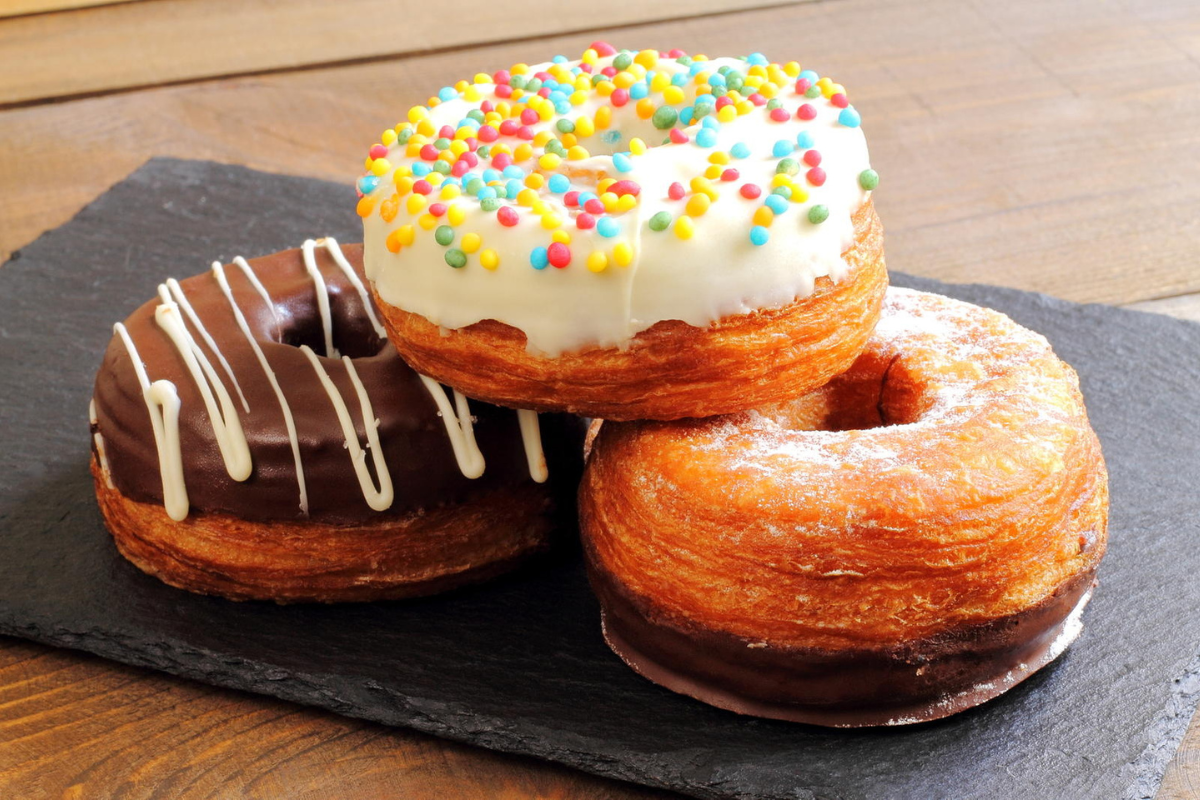The golden crescent, a buttery symphony of layers, a delicate dance of textures – this is the croissant, a pastry as iconic as the Eiffel Tower itself. Its mere presence conjures images of Parisian mornings, steaming coffee on cobblestone streets, and a flaky bite that melts into pure bliss. But the croissant’s journey to breakfast champion is far more fascinating and layered than its buttery folds.

Photo: My Sweet Precision
The croissant, with its delicate layers and alluring golden sheen, is more than just a breakfast pastry; it’s a symphony of textures and flavors, a cultural icon, and a testament to the ingenuity of French baking. Embedded in the fabric of French life, the croissant is a daily ritual, a shared experience, and a source of national pride. This essay delves into the history, science, and cultural significance of this flaky masterpiece, exploring how it went from a battlefield snack to a breakfast staple and captured the hearts of the world.
More than just breakfast: A cultural icon
The magic of the croissant lies in its intricate structure. Layered like a thousand paper-thin leaves, it’s a triumph of technique and artistry. The process begins with a simple dough of flour, water, yeast, and salt. But then comes the transformation. Layers of cold butter are incorporated into the dough through a series of folds and turns, known as “laminage.” This meticulous process creates hundreds of air pockets, trapping steam during baking and resulting in a characteristically light and airy texture. The key is achieving the perfect balance between the elasticity of the gluten in the dough and the flakiness of the butter. Any deviation, a misplaced fold, or an uneven temperature, can result in a dense, disappointing loaf.
But the science goes beyond just butter and dough. The quality of the ingredients plays a crucial role. French butter, with its higher fat content and unique flavor profile, is essential for achieving the desired richness and flakiness. The flour, too, needs to be strong enough to hold the layers together but delicate enough to produce a tender crumb. Every step, from the selection of ingredients to the precise timing of the baking process, requires skill and a deep understanding of the delicate dance between science and craft.

Photo: The International Kitchen
The croissant also transcends national borders, a symbol of French cuisine and its emphasis on quality ingredients and meticulous technique. It has garnered global recognition, becoming a breakfast staple in cafes and bakeries around the world. Even in countries with their rich pastry traditions, the croissant has carved a niche, offering a taste of French elegance and indulgence.
The evolution of the croissant continues. From classic plain to decadent chocolate and savory ham and cheese varieties, chefs and bakers are constantly pushing the boundaries of flavor and creativity. Croissants are transformed into ice cream flavors, croissant donuts (cronuts) take the world by storm, and even savory croissant sandwiches redefine lunch options. This willingness to experiment ensures that the croissant remains relevant and exciting, captivating new generations of pastry enthusiasts.
It’s easy to understand why the croissant remains so popular. It’s a sensory experience, a textural delight that pleases the eye, the nose, and the palate. The delicate flakes yielding to the slightest touch, the buttery aroma filling the air, the burst of rich flavor with each bite—these are sensory cues that trigger happiness and evoke feelings of comfort and belonging.

Photo: AMF Bakery
Regional variations of a flaky favorite around the world
The humble croissant, that golden crescent of flaky pastry, is more than just a breakfast staple in France. It’s a global ambassador of culinary artistry, taking on unique twists and flavors as it travels the world. From buttery Viennese kipferl to savory Japanese korone, let’s embark on a delicious journey to explore the fascinating regional variations of croissants:
Austria: The Kipferl, the croissant’s ancestor
The croissant’s story begins in Vienna, where the “kipferl” emerged in the 17th century. This crescent-shaped pastry, the croissant’s direct ancestor, boasts a similar flaky texture and bready interior. However, kipferl is typically smaller and sweeter, often dusted with powdered sugar or filled with jam or poppy seeds.
Italy: The cornetto, a sweet and creamy delight
The Italian version of the croissant, the “cornetto,” takes a decidedly sweet turn. Made with yeast dough and often filled with rich hazelnut cream or ricotta cheese, the cornetto is a decadent treat enjoyed for breakfast or as a quick snack. Some regions even have unique variations, like the “sfogliatella,” a layered cornetto filled with ricotta and candied orange peel.

Photo: Sweets And Lifestyle
Spain: The Napolitana, flaky and filled with chocolate
Spain’s take on the croissant is the “Napolitano,” a delightful pastry filled with a generous bar of dark chocolate. The dough is similar to the French croissant, but it’s often brushed with egg wash before baking, giving it a slightly sweeter and glossier crust. The Neapolitan is a perfect indulgence for chocolate lovers.
United States: The croissant donut, a fusion phenomenon
The American love for fusion food extends to the world of croissants. Enter the “croissant donut,” a hybrid pastry that combines the flaky layers of a croissant with the glazed sweetness of a donut. Filled with everything from chocolate to fruit to cream cheese, the croissant donut is a playful and delicious take on the classic.
Portugal: The croissant folhado, layers of sweet and savory
The Portuguese “croissant folhado” is a unique pastry that blends sweet and savory flavors. The dough is made with both butter and olive oil, giving it a richer taste. It’s then typically filled with ham and cheese, but can also be found with sweet fillings like chocolate or fruit.

This is just a glimpse into the diverse world of regional croissant variations. From sweet to savory, filled to plain, each region adds its unique touch to this beloved pastry. So, the next time you reach for a croissant, take a moment to appreciate its rich history and global journey. You might just discover a new favorite flavor waiting around the corner.

